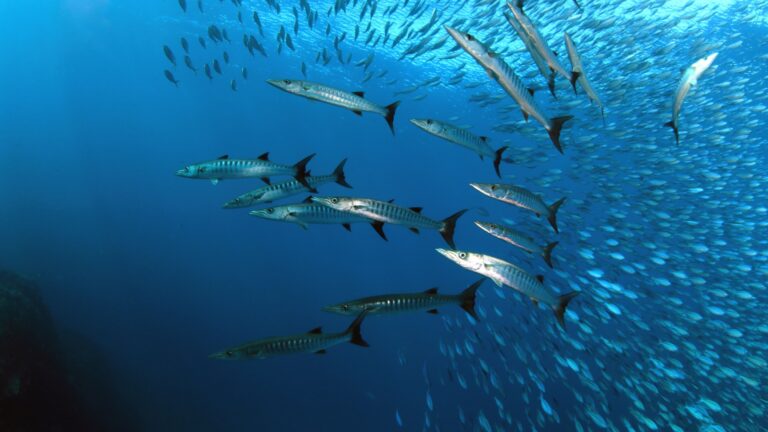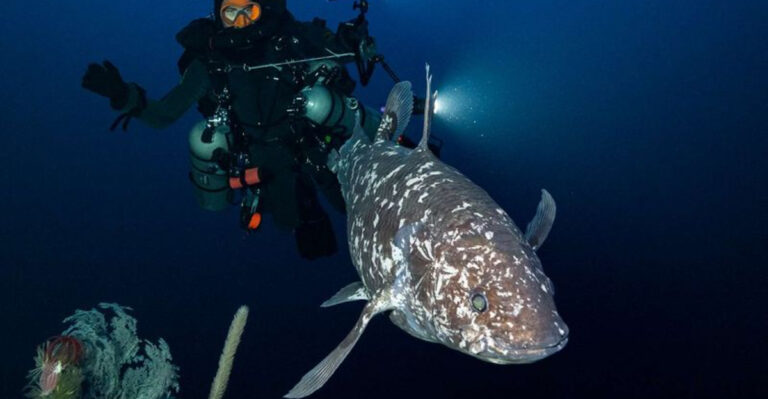15 Raptor Species That Rule North American Skies

Birds of prey are nature’s perfect aerial hunters, soaring high above North American landscapes with keen eyes and deadly talons.
These magnificent raptors play crucial roles in our ecosystems by controlling rodent populations and maintaining natural balance. From the mighty bald eagle to the speedy peregrine falcon, let’s explore the remarkable birds of prey that call our continent home.
1. Red-tailed Hawk: The Roadside Hunter
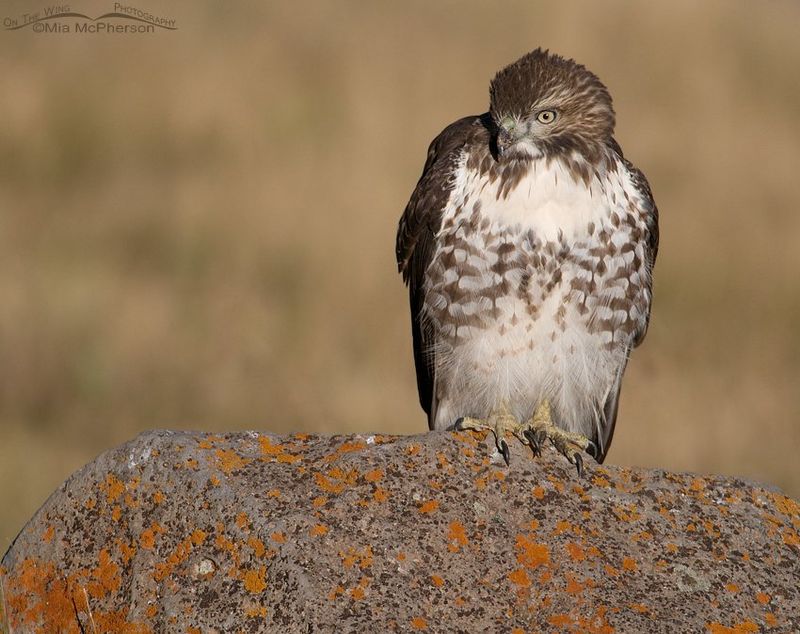
You’ve probably spotted these common hawks perched on telephone poles along highways. Their brick-red tails flash brilliantly in sunlight, making identification surprisingly easy even for beginners.
Masters of the hover-and-dive technique, red-tails hunt open grasslands for rabbits, squirrels, and mice. Their piercing scream is so iconic that Hollywood often substitutes it for eagle calls in movies!
2. Peregrine Falcon: Speed Demon Of The Skies
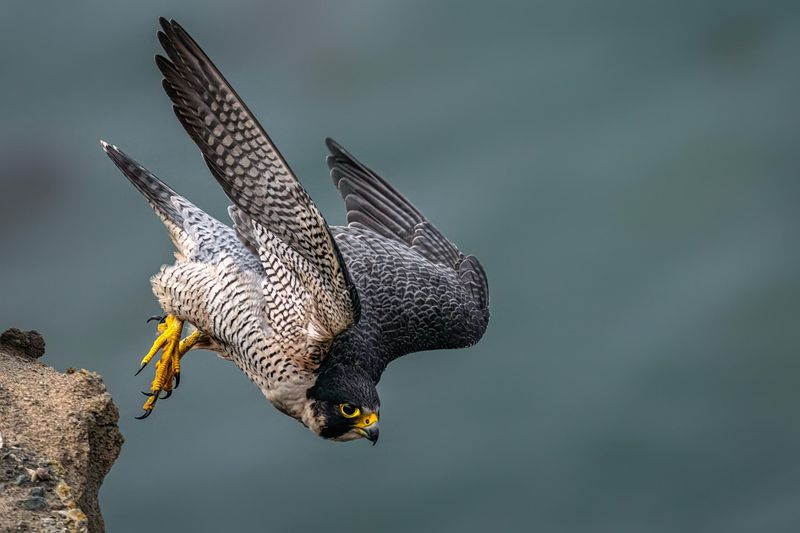
Hold onto your hats – peregrine falcons are the fastest animals on Earth! When diving after prey, they can reach speeds over 240 mph. That’s faster than most sports cars!
Urban adaptors extraordinaire, these slate-blue hunters now nest on skyscrapers and bridges. Their comeback story amazes scientists, having recovered from near-extinction in the 1970s to thrive in cities across North America.
3. Great Horned Owl: Night Vision Specialist
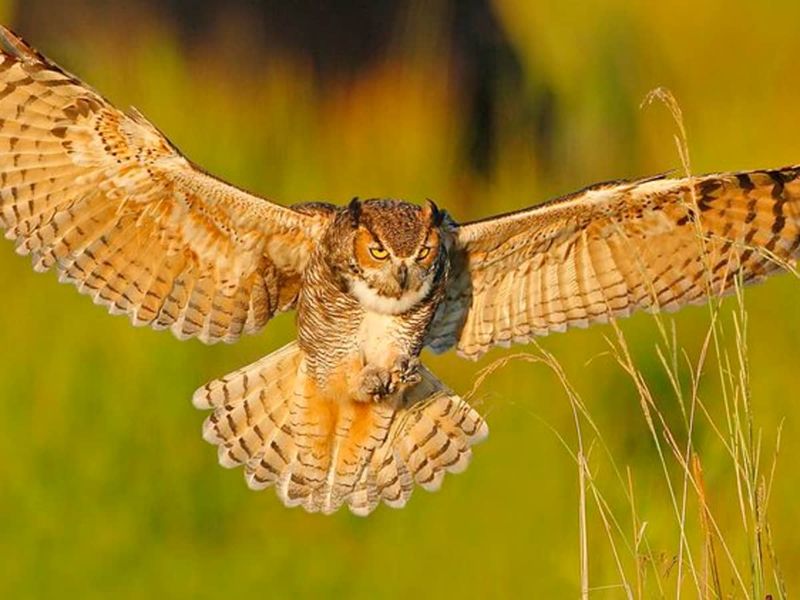
Those distinctive ear tufts aren’t actually ears! They’re feather clusters that help this fierce nocturnal hunter blend into tree bark during daylight hours.
Equipped with eyes that gather light 100 times more efficiently than human eyes, great horned owls rule the night. Their silent flight comes from specialized feather edges that muffle sound, allowing them to swoop down on unsuspecting rabbits, skunks, and even other owls.
4. Osprey: The Fish-Hunting Specialist

Nicknamed “fish hawks,” ospreys perform spectacular dives into water, emerging with wriggling fish clutched in their specialized talons.
Their outer toes actually rotate backward to grip slippery prey! Summer visitors to lakes and coastal areas across North America, these birds build massive stick nests on platforms, utility poles, and dead trees.
Conservation efforts providing artificial nesting platforms have helped osprey populations rebound dramatically since the 1970s.
5. Cooper’s Hawk: Backyard Bird Feeder Raider
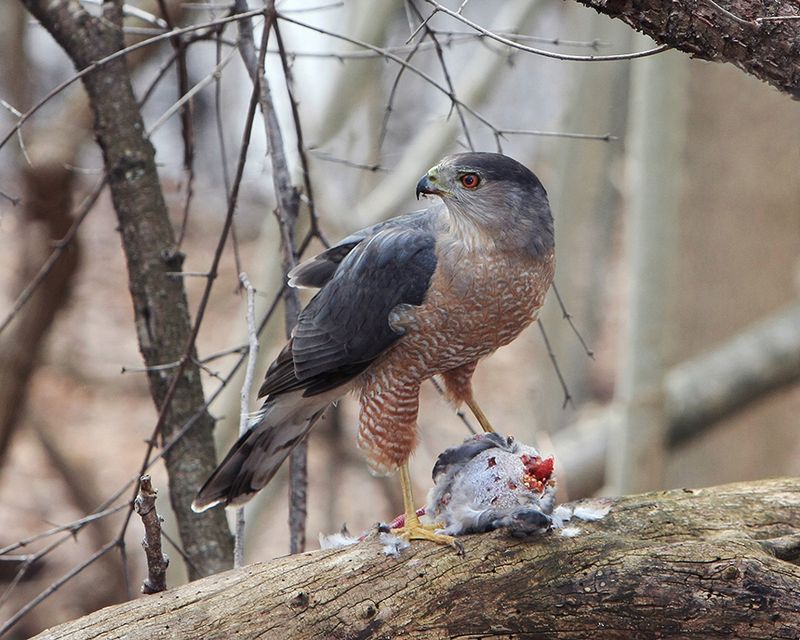
Sudden silence at your bird feeder? A Cooper’s hawk might be lurking nearby! These medium-sized woodland acrobats specialize in hunting other birds, flying through dense forest at high speeds.
Recognizable by their slate-gray backs, rusty barred chests, and long, rounded tails, they’ve adapted surprisingly well to suburban environments. Bird feeders inadvertently create perfect hunting grounds for these agile predators, who zoom through tight spaces to ambush unsuspecting songbirds.
6. Golden Eagle: The Alpine Sovereign
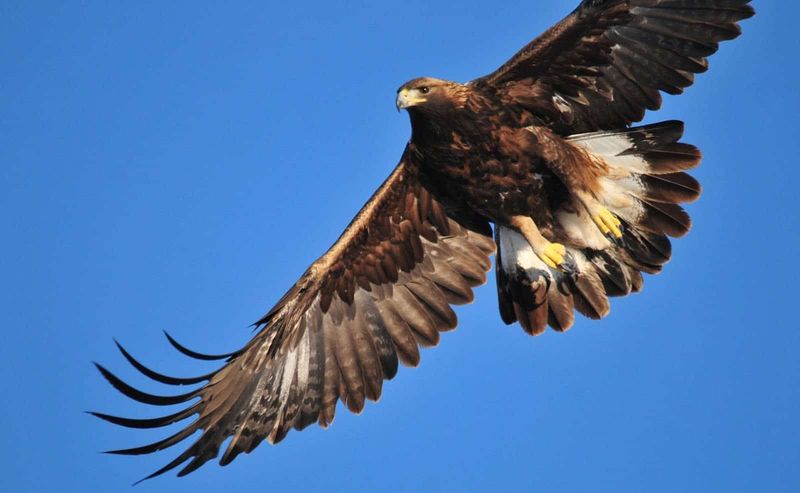
Larger than bald eagles but less flashy, golden eagles reign over western mountains and plains with quiet majesty. Their chocolate-brown plumage gleams with golden highlights in sunlight, especially around the nape.
Powerful enough to take down deer fawns and coyote pups, these impressive birds pair for life and may use the same cliff-side nest for generations. Native American tribes revered golden eagles, considering their feathers sacred items for ceremonial use.
7. American Kestrel: The Colorful Mini-Falcon

Robin-sized but fierce as any raptor, American kestrels bring a splash of color to open country with their rusty backs, blue-gray wings, and distinctive facial patterns. Males sport blue-gray wings while females have rufous ones.
Masters of the hover hunt, they flutter in place scanning for grasshoppers, mice, and small birds. Unfortunately, these beautiful small falcons face declining numbers due to habitat loss and pesticide use reducing their insect prey.
8. Northern Harrier: The Marsh Glider
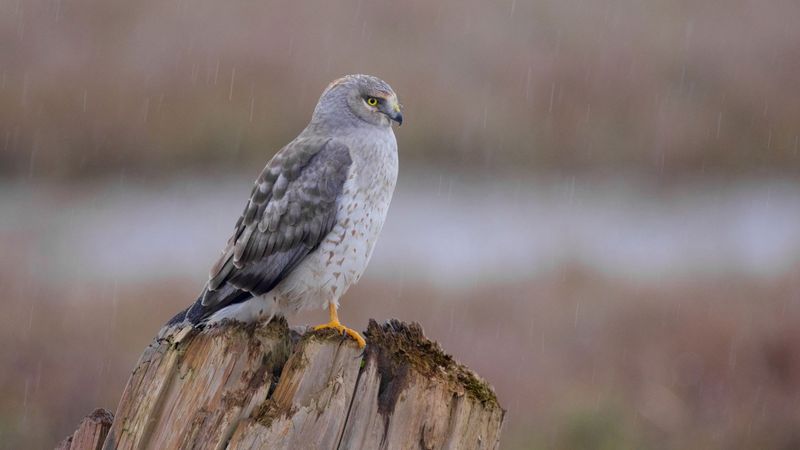
Floating low over marshes and grasslands, northern harriers hunt primarily by sound! Their owl-like facial discs collect and focus sound waves to pinpoint prey hidden in vegetation below.
Unlike most raptors, male and female harriers look dramatically different – males are ghostly gray while females are rich brown. Their distinctive low, gliding flight pattern with wings held in a shallow V-shape makes them easy to identify even from a distance.
9. Bald Eagle: America’s Majestic Symbol
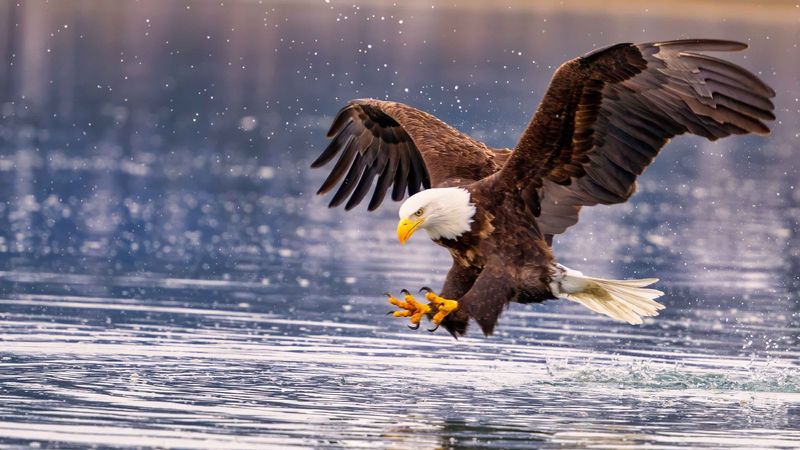
Sporting a distinctive white head against a chocolate-brown body, bald eagles command attention wherever they fly.
These massive birds boast a wingspan of up to 7.5 feet! Once endangered due to DDT poisoning, they’ve made an incredible comeback. Found near lakes and coastal areas, they primarily hunt fish but won’t hesitate to steal meals from other birds or scavenge when necessary.
10. Ferruginous Hawk: Prairie Giant
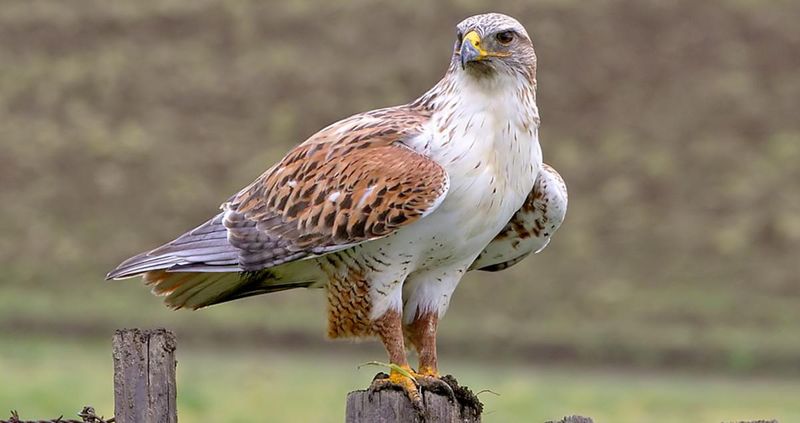
Named for their rust-colored (ferruginous) backs and shoulders, these hawks are the largest buteos in North America.
Prairie specialists, they soar over western grasslands hunting for jackrabbits and ground squirrels. Uniquely among hawks, ferruginous hawks have feathered legs all the way to their toes – an adaptation for reaching into burrows after prey!
Their population faces challenges as prairie habitats shrink, making conservation of remaining grasslands crucial for their survival.
11. Barred Owl: The Vocal Forest Phantom
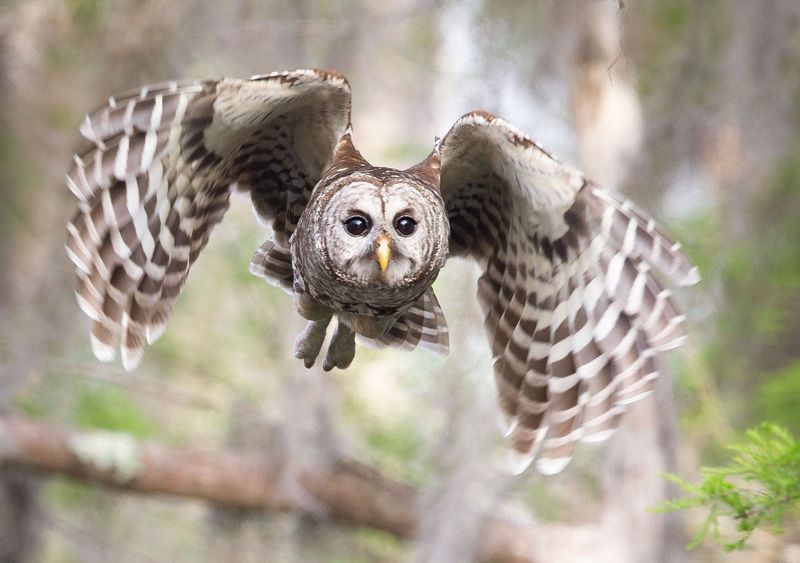
“Who cooks for you? Who cooks for you-all?” The distinctive hooting call of barred owls echoes through eastern and northwestern forests, often heard during daylight hours unlike most owls.
Round-headed without ear tufts, these chocolate-and-cream striped owls have dark, soulful eyes that seem to look right through you. Highly adaptable, they’ve expanded their range westward in recent decades, creating competition with the threatened spotted owl in Pacific Northwest forests.
12. Sharp-Shinned Hawk: The Songbird Assassin
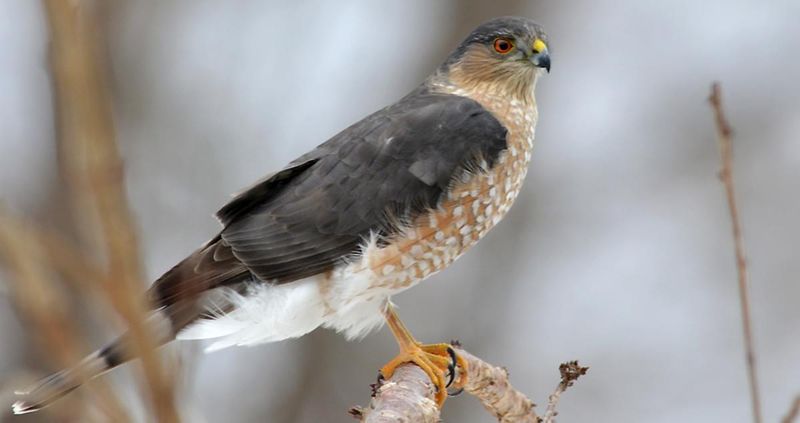
Smallest of North American hawks, these blue-gray speedsters zip through forests with astonishing agility. Their short, rounded wings and long rudder-like tails enable tight turns around trees at high speed.
Masters of ambush hunting, “sharpies” specialize in capturing songbirds in flight. During migration, they follow songbird routes southward, creating dramatic scenes at hawk watches where hundreds might pass in a single day, riding thermal currents along mountain ridges.
13. Snowy Owl: Arctic Visitor

White ghosts of the north, snowy owls occasionally stage dramatic southern invasions when lemming populations crash in their Arctic breeding grounds. Unlike most owls, they hunt actively during daylight hours in open terrain.
Males become increasingly white with age, while females retain some dark barring throughout life. Harry Potter fans recognize these magnificent birds as Hedwig! During invasion years, they appear on beaches, airports, and farm fields across northern states.
14. Turkey Vulture: Nature’s Cleanup Crew
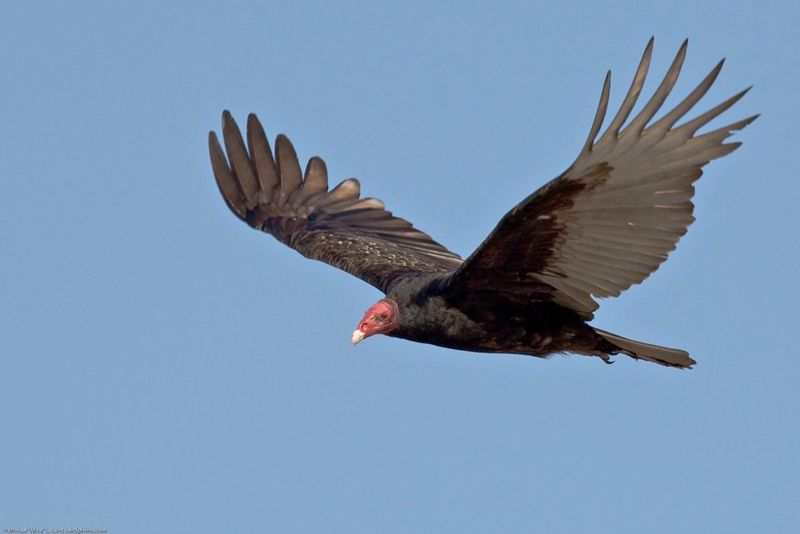
While lacking the predatory habits of typical raptors, turkey vultures earn their place through extraordinary adaptations for scavenging. Their bare red heads might seem ugly until you realize they’re perfectly designed for reaching into carcasses without soiling feathers.
Equipped with an incredible sense of smell, they can detect carrion from over a mile away! Watch for their distinctive V-shaped wing position as they rock side-to-side while soaring, rarely flapping as they ride thermal currents.
15. Swainson’s Hawk: Long-Distance Champion
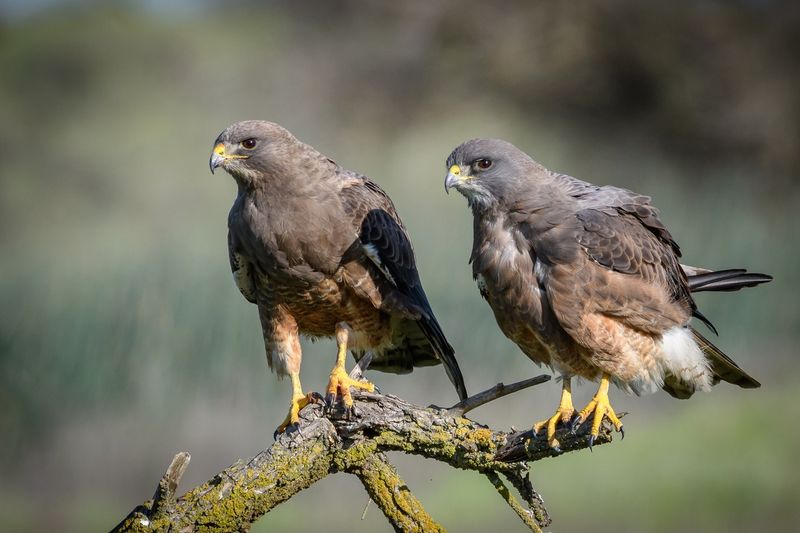
Champions of raptor migration, Swainson’s hawks travel over 6,000 miles twice yearly between western North American grasslands and Argentine pampas.
Few birds undertake such epic journeys! Summer residents of open country from Alaska to Mexico, they form spectacular migratory flocks called “kettles” that may contain thousands of birds.
During breeding season, they feast on grasshoppers, while wintering birds follow locust swarms across South American grasslands.

